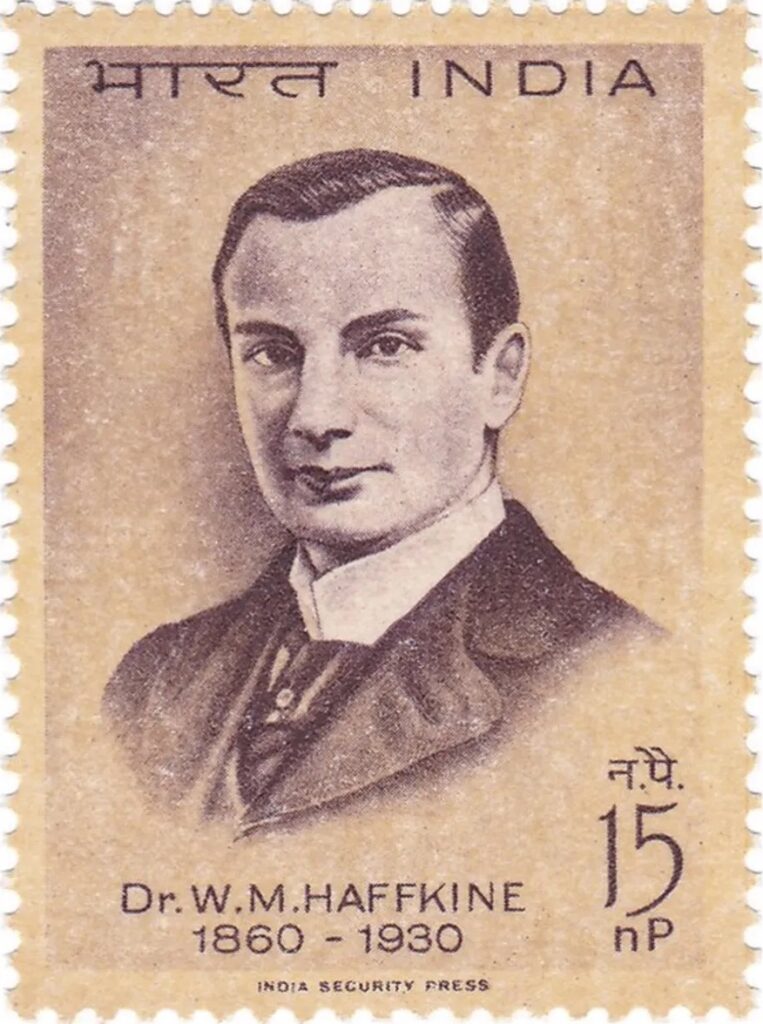
With seminal research in bacteriology and epidemiology at the turn of the last century, first in Paris and then in India, Waldemar Mordecai Haffkine developed the world’s first vaccines against cholera and bubonic plague. And tested them on himself first in public to prove their viability.
Dr. Waldemar Haffkine was a renowned Russian-French bacteriologist and epidemiologist celebrated for his groundbreaking work on vaccines.
Born on March 15, 1856, in Odessa, Ukraine, Haffkine’s pioneering research focussed on developing vaccines against cholera and bubonic plague.
Haffkine’s scientific journey began under the guidance of Ilya Mechnikov (best known for his research on immunology) at Imperial Novorossiya University in Odessa. In 1889, he joined Mechnikov and Louis Pasteur in Paris at the newly established Pasteur Institute. His early research explored protists like astasia, euglena and paramecium.
In the early 1890s, Haffkine shifted his focus to practical bacteriology, driven by the cholera pandemics ravaging Asia and Europe. He not only developed a vaccine but courageously tested it on himself first. On July 18, 1892, Haffkine risked his life by injecting himself with an attenuated form of the cholera bacterium that he cultured to prove the safety of his cholera vaccine, and reported his findings to the Biological Society, London, on July 30. Although his discovery generated excitement, it was not widely accepted by his senior colleagues or medical establishments initially.
Haffkine considered British India, where hundreds of thousands had died from ongoing epidemics, as the best place to test the efficacy of his cholera vaccine. Proceeding to India in 1893, he established a laboratory at Byculla in Mumbai and worked with volunteers in the bustees of Calcutta (now Kolkata), the tea plantations of Assam, and the jails of Gaya and Darbhanga. By 1902-03, spurred by its success, over half a million people were inoculated with the vaccine as a preventive measure.
When a bubonic plague epidemic struck Bombay (now Mumbai) in October 1896, the government sought Haffkine’s expertise. Working tirelessly in a makeshift laboratory now at Grant Medical College, Parel, he developed a vaccine in just three months, ready for human trials. On January 10, 1897, he inoculated himself with 10 cc of his plague vaccine preparation to demonstrate its harmlessness. Then came the turn of volunteers in Byculla jail. Although it had limitations, particularly against pulmonary forms of plague, the anti-plague vaccine marked a significant milestone.
Launching the fight against the disease in the field, in makeshift tents under the open sky, Haffkine personally inoculated about 55,000 people with his the anti-plague vaccine over a year and a half, saving most of them from death.
Between 1897 and 1925, 26 million doses of Haffkine’s anti-plague vaccine were sent out from Bombay. Tests of the vaccine’s efficacy showed between a 50% and 85% reduction in mortality. But no figure could be put on the number of lives he saved; they were enormous. With this, Haffkine proved the prophetic words of the brilliant scientist Louis Pasteur, who announced on the deathbed: “One of my students will stop the plague.”
In 1902, the death of 19 people in Mulkowal (Punjab) from tetanus poisoning as a consequence of anti-plague vaccination, possibly due to contamination in the field, cast a shadow on his reputation. Haffkine was blamed unjustly and exonerated only in 1907, following a campaign spearheaded by Ronald Ross and other renowned scientists of his time.
Haffkine spent altogether 22 years in India. He served as State Bacteriologist of the British Crown and the Chief Bacteriologist of the Government of India from 1896 to 1915. He retired in 1915, and suffering from malaria, had to return to France.
The two-room lab in Parel where Haffkine first developed his plague vaccine is now part of the Grant Medical College and Sir JJ Group of Hospitals, Mumbai. And the hospital continues to play a major role in India’s fight against pandemics – like the novel coronavirus. The Parel lab was renamed ‘The Haffkine Institute’ in his honour in 1925.
Haffkine died in Lausanne in 1930, aged 70. His obituary notice mentioned that his plague vaccine had been “adopted throughout India” and his lab had “issued many thousands of doses to various tropical countries”. The notice also quoted Lord Lister, the great British bacteriologist and pioneer of antiseptic surgery, who called Haffkine, simply, “the saviour of mankind.”
Author Paul Twivy, who researched Haffkine, noted that “there is no doubt that we would not have survived pandemics without Haffkine, even though he’s not known. He developed vaccines against two of the biggest killers ever. He is literally the most important scientist in terms of the number of lives he saved.”
Image: India postage issued a commemorative stamp on Dr. Waldemar Haffkine in 1964, honouring his significant contributions to public health and medicine in the country.
